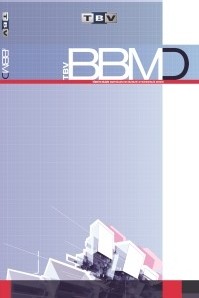Sanal Cerrahi Uygulamalarında Görselleştirme Altyapısı
sanal cerrahi, görselleştirme, dokunsal, çarpışma sezimi
Visualisation Platform for Virtual Surgery
virtual surgery, visualization, haptic, collision detection,
___
- [1] Voxel-Man, On the WWW, URL http://www.voxel-man.de/news/
- [2] Desai, J., 2008. Robotic Haptic Feedback System for Bx/RFA of Breast Tumor Under Continuous MRI. On the WWW, URL http://www.researchgrantdatabase.com/g/5R01 EB008713-02/Robotic-Haptic-FeedbackSystem-for-Bx-RFA-of-Breast-Tumor-underContinuous-MRI/
- [3] LapSim, On the WWW, URL http://www.virtualsurgery.vision.ee.ethz.ch/Sur gicalScience/LapSim
- [4] Montgomery, K., “The Spring Simulation Platform”, On the WWW, URL http://simworkshops.stanford.edu/06_0627/SP RING-Kevin%20Mont-ppt.pdf
- [5] Eriksson, M., “A Haptic and Virtual Reality Temporal Bone Surgery Simulator”, On the WWW, URL http://www.md.kth.se/research/projects/mda/p1 3.shtml?eng
- [6] Eriksson, M., Flemmer, H., and Wikander, J., “A Haptic and Virtual Reality Skull Bone Surgery Simulator”, 2005. World Haptics Conference, March.
- [7] Eriksson, M., Flemmer, H., and Wikander, J., “A Haptic and Virtual Reality Temporal Bone Surgery Simulator”, Submitted for publication in Advanced Robotics Magazine, March.
- [8] Bryan, J., Stredney, D., Wiet, G., and Sessanna, D., “Virtual temporal bone dissection: a case study”, On the WWW, URL http://portal.acm.org/citation.cfm?id=601762
- [9] Ohio Supercomputer Center, 2008 Annual Research Report, On the WWW, URL http://www.osc.edu/press/media/docs/2008_Re search_Report.pdf
- [10] CRS4 Visual Computing, On the WWW, URL http://www.crs4.it/vic/projects/
- [11] Hearn, D., Baker, M.P., Computer Graphics, Prentice-Hall, 2004
- [12] Cho, J., Jung, H., Lee, J., Lee, D., and Ahn, H., 2007. “Haptic Rendering of Drilling into Femur Bone with Graded Stiffness”, International Conference Frontiers in the Convergence of Bioscience and Information Technologies, pp. 525-530.
- [13] Cho, J., Jung, H., Yu, I., Lee, K., Lee, D., Ahn, H., Park, I., Yeo, S., and Han, S., 2007. “Surface-Data-Based Haptic Rendering for Simulation of Surgery of Closed Reduction and Internal Fixation”, Proceedings of the 29th Annual Int. Conference of the IEEE EMBS Cité Internationale, Lyon, France, August.
- [14] Hoogen, J., Riener, R., and Schmidt, G., 2002. “Control aspects of a robotic haptic interface for kinesthetic knee joint simulation”, Control Engineering Practice, November, 10(11), pp.1301-1308.
- [15] Park, H., and Lee, J., 2004. “Adaptive impedance control of a haptic interface”, Mechatronics, April, 14(3), pp. 237-253.
- [16] Lee, C. D., Lawrence, D. A., Lucy, L.Y., and Pao, Y., 2004. “Isotropic force control for haptic interfaces, Control Engineering Practice”, Mechatronic Systems, November, 12(11), pp. 1423-1436.
- [17] Lee, S. S., and Lee, J. M., 2003. “Design of a general purpose 6-DOF haptic interface”, Mechatronics, September, 13(7), pp. 697-722.
- [18] Agus, M., Giachetti, A., Gobbetti, E., Zanetti, G., and Zorcolo, A., 2003. "Adaptive techniques for real-time haptic and visual simulation of bone dissection", IEEE Virtual Reality Conference 2003 (VR 2003), pp. 102.
- [19] Balijepalli, A., and Kesavadas, T., 2003. "A Haptic Based Virtual Grinding Tool", 11th Symposium on Haptic Interfaces for Virtual Environment and Teleoperator Systems (HAPTICS'03), pp. 390.
- [20] Agus, M., Giachetti, A., Gobbetti, E., Zanetti, G., and Zorcolo, A., 2002. "Real-Time Haptic and Visual Simulation of Bone Dissection,", IEEE Virtual Reality Conference 2002 (VR 2002), pp. 209.
- [21] Chang, Y. H., Chen, Y. T., Chang, C.W., and Lin, C.L., 2008. "Development Scheme of Haptic-Based System for Interactive Deformable Simulation", Computer-Aided Design, in press. October.
- [22] Möller, T., 1997. “A Fast Triangle-Triangle Intersection Test”, JGTOOLS: Journal of Graphics Tools, 2(2), pp.25-30.
- [23] Tropp, O., Tal, A., and Shimshoni, I., 2006. “A Fast Triangle to Triangle Intersection Test for Collision Detection”, Computer Animation and Computer Worlds.
- [24] Held, M., 1997. “A Collection of Efficient and Reliable Intersection Tests”, Journal of Graphics Tools, 2(4), pp.25-44.
- [25] Devillers, O., Guigue, P., 2002. “Faster Triangle-Triangle Intersection Tests”, Technical Report 4488, INRIA.
- [26] Onbaşıoğlu, E., Atalay B., Goularas D., Soydan A., Okyar F. Şafak K., 2010. “Visualization of Burring Operation in Virtual Surgery Simulation”, ASME 10th Biennial Conference on Engineering Systems Design and Analysis ESDA 2010.
- [27] Onbaşıoğlu, E., Paker,, Y., 1997. “A Comperative Workload-Based Methodology for Comparison of Parallel Computers”, Future Generation Computer Systems, 12, pp.521-54
- ISSN: 1305-8991
- Başlangıç: 2005
- Yayıncı: Türkiye Bilişim Vakfı
Kablosuz Duyarga Ağları ile Engelli İnsanlar İçin Akıllı Ev Uygulamaları
Ali Haktan Işılak, Şebnem BAYDERE
Model Güdümlü Taktiksel Harp Sahası Yönetim Sistemi Tasarımı
Ethem Fatih Can, Özgür Aydın Tekin, Mahmut Devrim Tokcan
Yazılım Mimarisinin Kalite Gereksinimleri:Yazılım Güvenilirliği
Java Card Yazılımlarının Model Güdümlü Geliştirilmesi
Hidayet Burak SARITAŞ, Geylani KARDAŞ
Türkçe Metinler için Olay Sıralaması
İstenmeyen Cisimlerin Resimden Kaldırılması
Türkçede Eklerin Kazandırdığı Anlamlar
JADEX Kanı-İstek-Hedef Etmenlerinin Model Güdümlü Geliştirilmesi
Bekir Afşar, Geylani Kardaş, N. Yasemin Topaloğlu, Oğuz Dikenelli
Yakın Alan İletişimi Teknolojisi
Büşra Özdenizci, Kerem Ok, Mehmet N. Aydın, Vedat Coşkun
Ulusal Aşı Bilgi Sistemi: Ontoloji Tabanlı Sağlık Bilgi Sistemi
